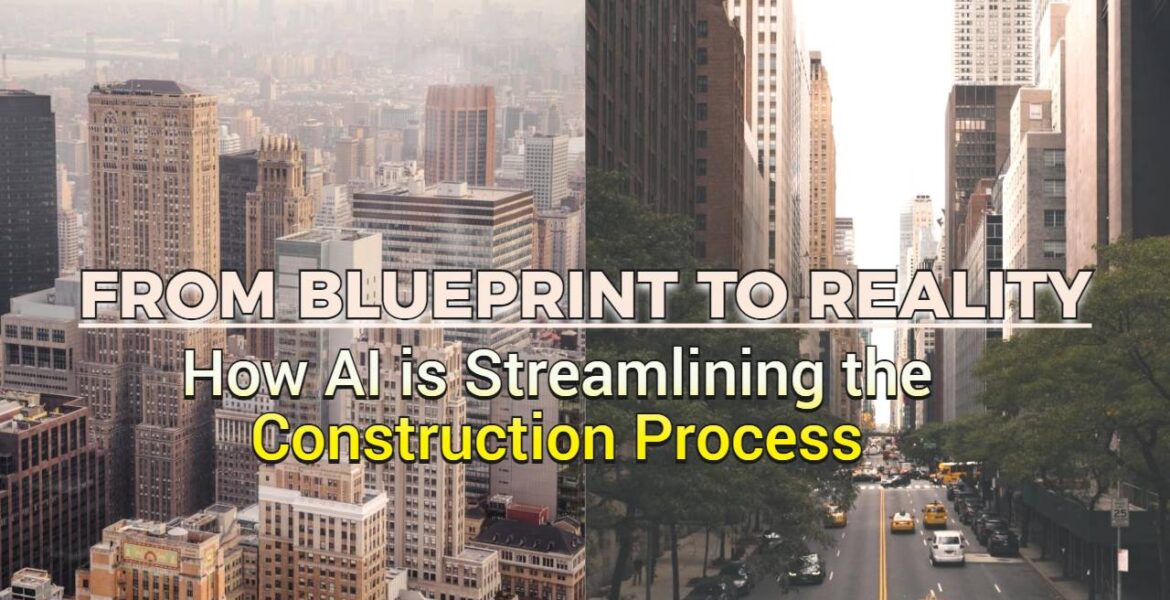“From Blueprint to Reality: How AI is Streamlining the Construction Process“
March 3, 2023
2023-07-10 9:33
“From Blueprint to Reality: How AI is Streamlining the Construction Process“

<br>“<strong>From Blueprint to Reality: How AI is Streamlining the Construction Process</strong>“
The construction industry has always been notorious for its complex and dynamic nature, with a multitude of moving parts that need to be carefully orchestrated to ensure successful project completion. From managing stakeholders to juggling timelines and budgets, the process can often be overwhelming. But what if we told you AI could help streamline this entire process? That’s right! In this blog post of MIDAS, architecture colleges in Chennai we’ll explore how artificial intelligence is transforming the construction industry from blueprint to reality, making it easier than ever before to manage even the most intricate projects efficiently. So buckle up and get ready for an exciting journey into the future of construction!
Introduction to AI in Construction
In the construction industry, AI is being used to streamline the design and construction process. AI in construction companies uses to create digital twins of buildings, which can be used to test different construction scenarios before they happen. By using AI to simulate different construction scenarios, construction companies can save time and money by avoid potential problems during the construction process. In addition, AI is being used to create 3D models of buildings, which can be used by construction workers to plan and execute construction projects.

Benefits of Using AI in Construction
The use of artificial intelligence (AI) in construction is providing significant benefits to the industry. By automating repetitive tasks, AI is helping construction companies improve safety, efficiency and productivity while reducing costs.
One of the most significant benefits of using AI in construction is improved safety. Construction is a notoriously dangerous industry, and even small improvements in safety can have a big impact. AI-powered drones can be used to inspect work sites and identify potential hazards before they become a problem. In addition, AI can be used to develop better safety procedures and protocols for construction workers to follow.
Improved efficiency is another major benefit of using AI in construction. Automating repetitive tasks frees up workers to focus on more important tasks. For example, construction companies are using robots to lay bricks and pour concrete, which reduces the need for human labor and speeds up the construction process. In addition, AI can be used to create more efficient workflows and project plans. This helps construction companies complete projects on time and within budget.
Finally, using AI in construction can help improve productivity. By automating tasks and improving workflows, construction companies can get more work done in less time. This increased productivity can lead to faster project completion times and higher profits for construction companies.

I AI’s Role in Design and Planning
Artificial intelligence (AI) is playing an increasingly important role in the design and planning of construction projects. By automating repetitive tasks and providing actionable insights, AI is helping construction professionals save time and money while improving the accuracy of their work.
One area where AI is having a particularly profound impact is in the creation of 3D models. Using data from 2D drawings, point clouds, and other sources, AI-powered software can quickly generate realistic 3D models that can be used for everything from feasibility studies to digital marketing materials. This technology is not only speeding up the design process, but it is also making it possible for architects and engineers to create more accurate models than ever before.
Another area where AI is being used in construction is in the development of construction schedules. By analyzing data about past projects, AI-powered software can identify patterns and relationships that can be used to predict how long a given task will take to complete. This information can then be used to create more efficient construction schedules that save time and money.
AI is also being used to improve project management in construction. Software that utilizes AI capabilities such as machine learning can help project managers identify potential problems early on and take corrective action to avoid them. This type of software can also be used to automatically generate progress reports and other documentation, which saves time and ensures accuracy.
As you can see, AI is playing a major role in streamlining the construction process from blueprint to reality. By automating
Real World Examples of AI use in Construction
In the construction industry, AI is being used in a number of ways to streamline processes and improve efficiency. For example, construction companies are using AI-powered drones to inspect buildings and sites under construction. This helps to identify potential safety hazards and correct them before they cause accidents.
Additionally, AI is being used to create 3D models of construction projects. This allows for better planning and coordination between different teams working on a project. It also helps to identify potential problems that could arise during construction and allows for solutions to be found before work even begins.
AI is also being used to develop new materials for use in construction. For example, a company called Katerra is using AI to develop a new type of concrete that is stronger and more durable than traditional concrete. This new material could revolutionize the construction industry and make buildings safer and more resilient to natural disasters.
Challenges Faced by AI in the Construction Industry
There are a number of challenges that AI faces in the construction industry. Firstly, the industry is highly fragmented, with a large number of small and medium sized construction firms. This makes it difficult for AI startups to get traction and scale their businesses. Secondly, the construction industry is very slow to change and adopt new technologies. This is due to the fact that construction projects are complex and often have long timelines. As a result, it can take many years for new technologies to be adopted by the industry. Thirdly, the construction industry is highly risk-averse. This means that construction firms are often reluctant to try new technologies, as they could potentially lead to delays or cost overruns. Finally, the data required to train AI models is often not readily available. This is because construction projects generate a large amount of data, which can be difficult to collect and labelled.
Conclusion
AI is quickly revolutionizing the construction process by streamlining blueprinting, automation and even safety protocols. This new technology can help teams increase productivity and cut costs while improving accuracy and worker safety. Although AI may not be able to completely take the place of humans in the construction industry, it can certainly make a major difference when it comes to managing projects efficiently. With advancements in this field continuing to develop, there are sure to be more applications for AI in this industry soon enough.
Ar.J.M. Abdul Kadar


